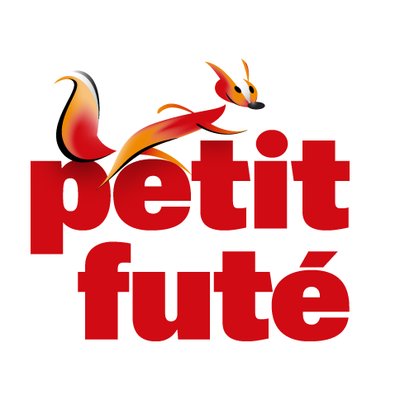Vous pensez qu'il y a une erreur sur ce lieu ?
Signaler une erreur
Vos retours sont importants pour nous. Si vous avez remarqué une erreur concernant ce lieu, merci de nous en informer pour que nous puissions la corriger.
Propriétaire de ce lieu ?
Nous récupérons automatiquement les informations disponibles sur votre lieu. Si jamais celles-ci ne sont pas correctes, connectez-vous gratuitement sur notre tableau de bord pour les modifier et bonus, accédez à vos statistiques détaillées.
Ce qu'en disent les utilisateurs
Approuvé par 3 partenaires officiels


Patrimoine Mondial de l'UNESCO
@unescoworldheritage
90770followers
1041places
"In the 16th and 17th centuries, the fortress-city of Fasil Ghebbi was the residence of the Ethiopian emperor Fasilides and his successors. Surrounded by a 900-m-long wall, the city contains palaces, churches, monasteries and unique public and private buildings marked by Hindu and Arab influences, subsequently transformed by the Baroque style brought to Gondar by the Jesuit missionaries. 📸 © UNESCO"


Histoire Itinérante
@histoireitinerante
2118followers
7516places
"Résidence de l'empereur éthiopien Fasilidès et de ses successeurs aux XVIe et XVIIe siècles, la ville fortifiée de Fasil Ghebbi regroupe à l'intérieur d'une enceinte de 900 m palais, églises, monastères, bâtiments publics et privés d'un style très particulier, marqué d'influences indiennes et arabes, et métamorphosé par l'esthétique baroque transmise au Gondar par les missionnaires jésuites."


ETIOPIA (ESPAGNOL)
@petitfute
4followers
383places
"Située au coeur de la ville, la cité royale de 7 hectares classée au patrimoine mondial de l'Unesco depuis 1979 est donc entourée de remparts. Elle comprend plusieurs châteaux correspondant aux règnes de différents empereurs. Peu d'explications sur place, nous vous conseillons vivement de prendre un guide pour cette visite. Il restera avec vous toute la journée dans les sites alentour. En Afrique, c'est un vestige unique en son genre."
Autres lieux à voir autour

"Résidence de l'empereur éthiopien Fasilidès et de ses successeurs aux XVIe et XVIIe siècles, la ville fortifiée de Fasil Ghebbi regroupe à l'intérieur d'une enceinte de 900 m palais, églises, monastères, bâtiments publics et privés d'un style très particulier, marqué d'influences indiennes et arabes, et métamorphosé par l'esthétique baroque transmise au Gondar par les missionnaires jésuites."
@histoireitinerante
"ancienne forteresse de l'ancienne capitale "
@tom.bazille
"UNESCO World Heritage During the Middle Ages, Ethiopian rulers moved their court frequently, the emperors traveling about with courtiers and officials, judges, guards, servants, and prostitutes, carried on anything up to 100,000 mules. In the 1630s, however, when Emperor Fassilidas succeeded his father, Susenyos, a Roman Catholic convert, he reverted to the country's Coptic Christian tradition, closed the country to foreigners, and created a permanent capital in Gondar. At the meeting point of three important caravan routes, Gondar became a wealthy commercial center that remained Ethiopia's capital for about 250 years and is so rich in palaces, castles, and churches that-despite being sacked by a dervish army from the Sudan in 1888- it has been called Africa's Camelot. The oldest building behind the high stone walls of the Royal Enclosure is the castle built by Fassilidas, which has been recently restored. With its domed towers, it seems to reflect Indian, Moorish, and Portuguese influences and may have been designed by an Indian architect. Tunnels and paths lead to buildings added by later rulers, including the library of Yohannes I and the palace of lyasu I, who ruled until 1706 and is considered the greatest of his line. There are also the cages where the emperor's lions were kept, the squares used for public executions, and the tomb of Walter Plowden, the British consul and a friend of the emperor Tewodros in the mid-nineteenth century. The compound was bombed by the British in 1941 when the Italians had their headquarters there. Outside the town are the splendidly decorated Debre Berhan Selassie Church and Fassilidas's Bath-the scene of the annual Timket celebration when it is blessed before being opened for bathing. The city contains some impressive Art Deco architecture from the period of Italian occupation (1936-41)."
@nchavotier
"Située au coeur de la ville, la cité royale de 7 hectares classée au patrimoine mondial de l'Unesco depuis 1979 est donc entourée de remparts. Elle comprend plusieurs châteaux correspondant aux règnes de différents empereurs. Peu d'explications sur place, nous vous conseillons vivement de prendre un guide pour cette visite. Il restera avec vous toute la journée dans les sites alentour. En Afrique, c'est un vestige unique en son genre."
@
"Cité fortifiée du 1er roi non nomade éthiopien, elle a été développée par ses successeurs pendant plusieurs siècles. On y trouve entre autre des bains géants qui servent pour la cérémonie du timkat, l’équivalent orthodoxe de l’épiphanie "
@
"In the 16th and 17th centuries, the fortress-city of Fasil Ghebbi was the residence of the Ethiopian emperor Fasilides and his successors. Surrounded by a 900-m-long wall, the city contains palaces, churches, monasteries and unique public and private buildings marked by Hindu and Arab influences, subsequently transformed by the Baroque style brought to Gondar by the Jesuit missionaries. 📸 © UNESCO"
@
"Grab a local guide and stroll around the 17th century fortress city; its numerous castles have earned Gonder the label ‘Africa’s Camelot’."
@